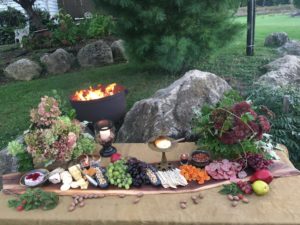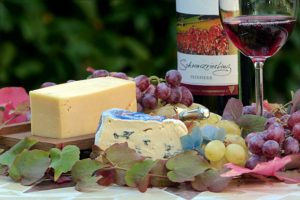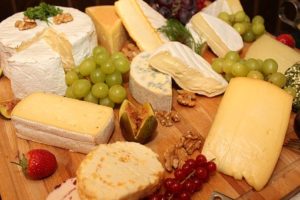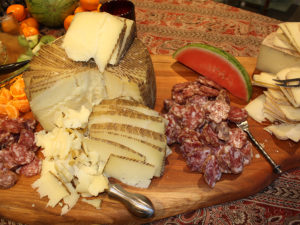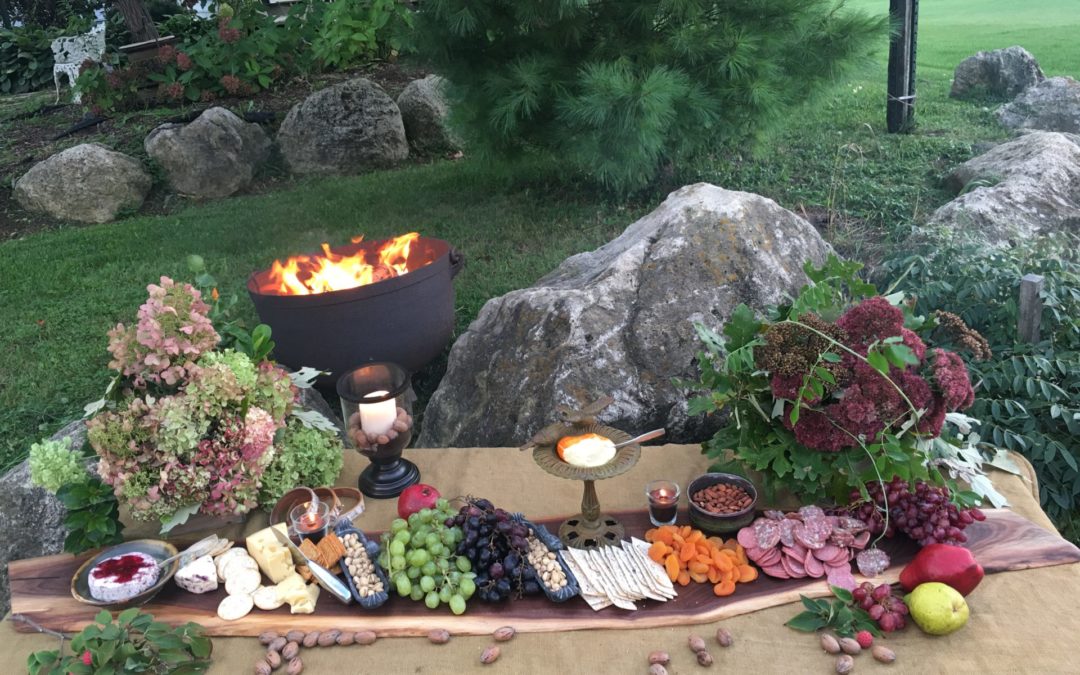
by Wanda | Apr 14, 2020 | blog
Anxiety disorders are the most common mental illness in America. Surprisingly, their number even surpasses depression. And, with this prolonged season of quarantine, anxiety is at an all-time high. I am committed to your health and safety and that of your loved ones. And, I want to share one possible solution that you can utilize every day from the comfort of your home … culinary therapy!
What Is It?
Culinary therapy has been defined as “a therapeutic technique which uses culinary arts, cooking, gastronomy, and an individual’s personal, cultural, and familial relationship with food to address emotional and psychological problems faced by individuals, families, and groups.”
In today’s society, there are many forms of alternative therapies which are making a huge impact. These include art, dance, and many others. But, culinary therapy, which is familiar to us and engages so many of our senses, is an underutilized form of healing.
Creative expressive processes, like cooking, are designed to help you learn more about yourself. Additionally, they can help you better understand, communicate, and navigate your feelings. This is especially helpful when words can be difficult to find.
Moreover, culinary therapy often leads to better nutrition. This then promotes overall body health. Similarly, whatever food is being cooked or used in this type of therapy allows the release of Dopamine (a pleasure chemical) and Ghrelin (a mood hormone). And, Cortisol (an anxiety and aggression hormone) is lowered.
Simply put, culinary therapy is the total mind-body healing package we all need in some form or another.
Benefits of Culinary Therapy
- Creates a specific time to slow down, focus, and prepare
- Enables reflection/revelation when it comes to familial or cultural relationships when using a family or ethnic recipe
- Creates communication opportunities between spouses and within families
- Results in quality time with self or with families
- Allows for room to learn and grow; possibly even have some laughs
- Assists with processing upsetting emotions when things get burnt, or the recipe doesn’t turn out right, without the stakes being high-risk
- Creates a safe place to try new things, be adventurous, and get creative
- Ensures the focus is on cooking and on the meal, which can make others open up because they don’t feel the attention is on them
There is a plethora of benefits to culinary therapy, and these are just a few. Cooking creates its own unique atmosphere that consistently and constantly opens new doors on the path to wellness.
How to Use Culinary Therapy
With social distancing being our new norm, culinary therapy principles have never been more applicable for improving your mental health from the comfort of your home. Consider all the unique ways you can use grazing tables to create memories and generate conversation. You and your significant other can create a charcuterie board for an intimate date night in. Or, you can create an all-desserts board for family movie night, or make an individual wine and cheese board and do a video call with friends.
Whether a DIY charcuterie board or a home-cooked meal is your preference, all the aforementioned benefits can be cultivated by gathering together in the kitchen, around the dining table, in the living room, or in the backyard. Use the meal-prep time to its fullest; and then enjoy the fruits of your labor. There is no limit to how you might use the culinary arts to be uplifting!
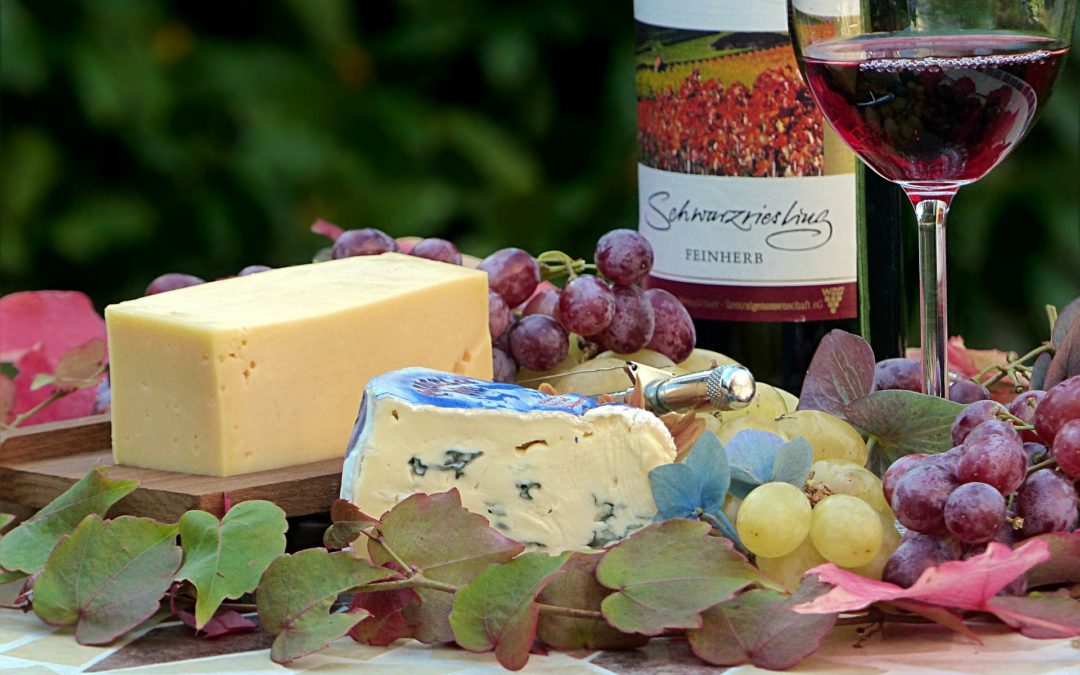
by Wanda | Mar 28, 2020 | blog
Wine and cheese is one of the world’s oldest classical duos. You see them appear in literature, film, a variety of arts, and across the pages of social media. As charcuterie boards and exquisite grazing tables become more popular, it’s even more important to understand how to select the best wines for the right cheeses. And, we’ve made it easier than ever to get the know-how!
Basic Wine and Cheese Guidelines
When pairing wines and cheeses, you want to take into account their various ages, textures, and flavors. A great place to start is by matching wines and cheeses that come from the same region. This ensures that they have similar characteristics and will compliment each other nicely.
Another thing to keep in mind is the acidity level of each partner. Generally speaking, they should match. For example, creamy cheeses pair well with mellow white wines, while tangier cheeses go better with full bodied wines. The rule of thumb is: the stronger the wine, the sharper the cheese.
Fox n Company Suggestions
Here’s what I recommend to help direct your pairing:
- Hard cheeses, like Cheddar or Manchego, go well with a medium bodied wine.
- Soft cheese, like Brie or Camembert, go well with fruity wines or even a rosé.
- Blue cheeses, like Stilton or Roquefort, pair well with sweet wines. (These cheeses also go well with ports or stouts.)
- Goat cheeses compliment dry, crisp wines, but can also be lovely with a fruity red wine.
- You can also choose “Wash-Rind” cheeses to pair with a drink. However, keep in mind these cheeses are usually very pungent and may not be as delightful for the average guest. If you choose a ‘stinky cheese’, like Taleggio or Reblochon, a crisp dry white wine or even a Belgian ale are your best bet.
- You may also choose to do fondue over a charcuterie board. Remember that fondue is typically composed of a variety of cheeses, so they are harder to match. This is where taking into consideration the region of the cheeses used is important and will provide the best route for a good pairing. However, if in doubt, an aromatic white wine should be a safe selection.
Practical Suggestions
Now that you have the big picture guidelines, here are some practical suggestions to get you started:
- Cabernet Sauvignon goes nicely with Camembert, Cheddar, various blue cheeses, Gouda, and Parmesan.
- Merlot pairs well with soft cheeses, Cheddar, Gorgonzola, Parmesan, or Gruyere.
- Pinot Noir is lovely with soft cheeses, especially Feta, or your more common cheeses like Monterey Jack, Muenster, or Swiss.
- Shiraz/Syrah is best with Cheddar, Gouda, or Parmesan.
- Zinfandel is great with Asiago, Feta, Goat cheese, Gouda, or Gruyere.
- Sangiovese fits with Blue Cheese, Fontina, Mozzarella, Provolone, or even Ricotta.
- Chardonnay goes smoothly with soft cheeses, Goat cheese, Gouda, Gruyere, and Parmesan.
- Pinot Gris pairs best with hard cheeses or with Mozzarella or Muenster.
- Riesling goes nicely with soft cheeses.
- Sauvignon Blanc matches hard cheeses, Feta, Goat cheese, Gruyere, or Neufchatel.
Whether you are planning a date night, a girls’ night, a fondue party, creating a menu for an event, or simply enjoying any occasion to have an elevated charcuterie board, following these recommendations will make your pairings, and your celebration, a true success!
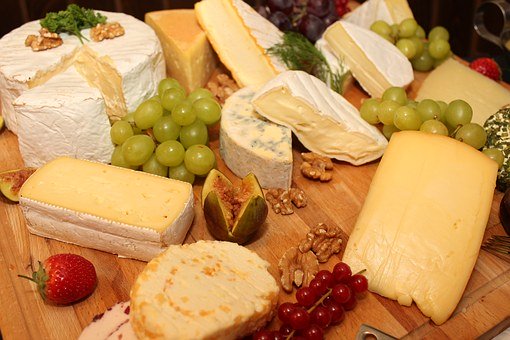
by Wanda | Feb 22, 2020 | blog
There are more than 2,000 varieties of cheese worldwide. So, it’s no wonder that cheese is one of the most popular foods available. From charcuterie extravaganzas to the classic macaroni and cheese and beyond, cheese is full of flavorful fun.
However, most everyone has experienced the disappointment of going to grab their cheesy delight only to find it dried out or moldy. Therefore, I’ve compiled a list of the best tricks and tips to help you keep all your cheesy goodness fresh as long as possible.
Cheese Storage and Handling How-To
- Cheese is a living thing and needs to breathe. So, do NOT store your precious commodity in plastic (wrap or container) or a non-porous wrapper. Instead, use butcher or wax paper. Or, you can use specially designed cheese paper.
- Pay attention to how tightly or loosely you wrap your cheese. If wrapped too tightly, it will become smelly and the flavor will take a turn for the worse. Wrapped too loosely, cheese will become hard and dry. Be like Goldilocks and find the fit that’s just right!
- Cheese sweats (who knew?). So, each time you unwrap it, get a new piece of whatever paper you’re using. This will allow for a new, perfectly breathable seal.
- Cheese does not like the cold. Avoid storing cheese in the coldest part of your fridge (which can also dry it out due to airflow). Instead, try storing it in the produce drawer where there is more humidity and the temperature is a bit warmer.
- If you have a soft cheese that came in a container with a brining liquid, it is best left in its original container. Soft cheeses are often fresher and lack added preservatives. Also, that liquid is there to help maintain freshness.
- If you are using a block or wedge of cheese, place a thin, smooth layer of butter where you make a cut. This will slow down the ripening process.
- Place a paper towel with some vinegar inside your now properly wrapped cheese. This will stave off mold and keep it from drying out.
- You can also give your cheese a light coating of olive oil. This will protect it from drying out. Also, if mold forms, it will cling to the oil versus the cheese.
There you have it, everything you need to know about how to properly store and preserve cheese so it can be enjoyed whenever you like. It’s time to share your cheese with glee. Happy cheesing!
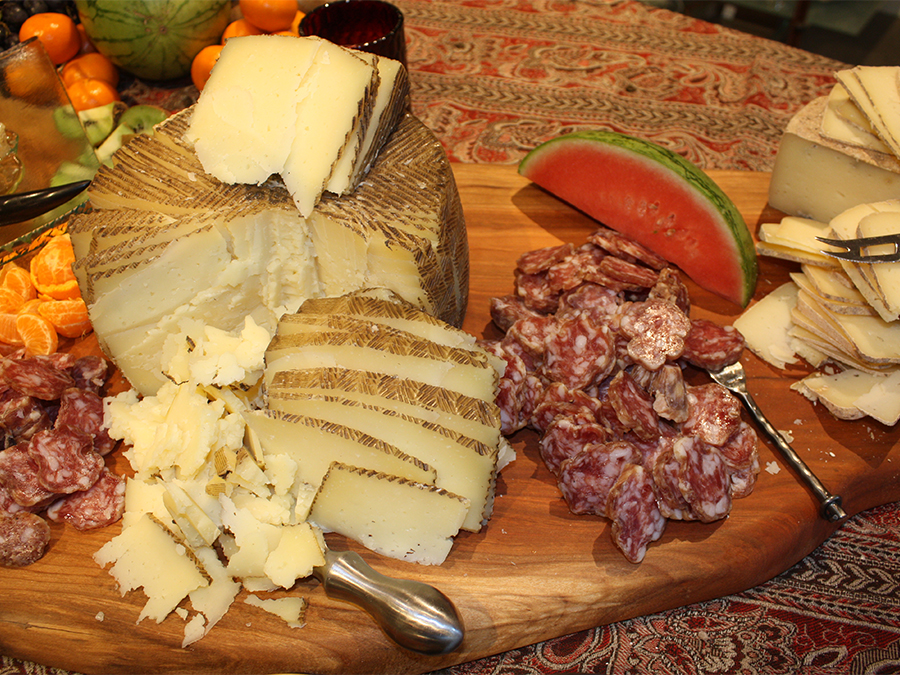
by Wanda | Jun 7, 2018 | blog
When designing a grazing table, I like to mix things up a bit and give the taste buds a road trip full of flavors & textures. The best grazing tables offer a montage of flavors. One of the stars on your grazing table should be your choice of cheeses. From a sweet, creamy cheese to the sharp and tangy, it should always be a journey of flavors. For that added wow factor in both presentation and taste, look to offer the unexpected and unusual.
So, what are the best cheeses to buy and how should cheese be served? These are great questions and ones we get from customers all the time. Today’s blog is going to help get you some answers; before you know it, YOU will be the cheese expert and giving advice to all of your friends!
What are the best cheeses to buy?
There are over 1,800 different types of cheeses around the world – how can you possibly choose! Believe me, I understand. I can’t tell you how many times I’ve stood in front of a gorgeous cheese counter and been completely overwhelmed. If you’ve ever found yourself drooling over the cheese counter at Eataly in downtown Chicago, you will know exactly what I’m talking about!
So, let’s break it down …
First, and foremost, buy the best quality cheeses you can find. The flavors will be as they were intended, and their shelf life will be longer as well. Next, you MUST sample different types of cheese – how are you ever going to know what flavors you like if you don’t try them?
Don’t shy away from trying atypical flavors of cheese, you might just be surprised at how amazing they are. Just last weekend, I tried an Espresso Bellavitano cheese that was just spectacular. It is a unique Cheddar-Parmesan inspired Italian cow’s cheese, rubbed with fresh ground Italian roast espresso beans. Who knew cheese and coffee could go so good together?
So, think outside the box and find a great local cheese shop and get tasting – I know, it’s a rough life! A great cheese shop will also point you in the right direction of cheese pairings as well, so don’t be afraid to use that valuable resource.
How should cheese be served?
In order to enjoy the full flavor of your cheese, always serve it at room temperature. Remove it from the refrigerator and let it sit for at least an hour before you plan to serve it. You also may want to cut a few slices to start your display, but refrain from cutting the entire block or wedge of cheese. It is best when it is cut fresh.
Another thing to keep in mind is that you don’t want your cheeses to be overcrowded on your charcuterie board. There is the possibility that a stronger cheese might affect the flavor of a milder cheese. Also, if your guests are going to be slicing as they go, they will appreciate a little room to maneuver the knife.
You should consider labeling your choices as well. Your guests will appreciate knowing what they are eating, and it will save you from having to answer “What type of cheese is this?” a gazillion times during your event.
For a really gorgeous presentation, add in artisan charcuterie meats, the unusual cracker and hard crusty bread, pepper jellies, honey comb, seasonal fruits and gourmet chocolates. I always serve these displays on one of my handcrafted charcuterie boards as it adds another element of delight to the senses.
Now that your charcuterie board is arranged, take a little time to sit back and relax a bit. Let the flavors work their magic – cheese is a living, breathing edible delight. Bon Appétit!
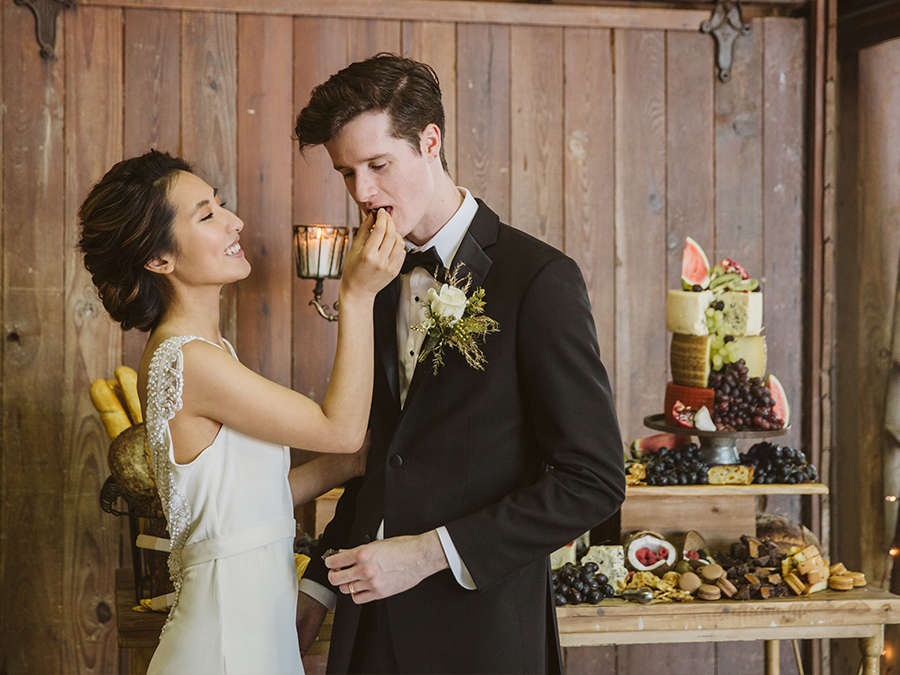
by Wanda | May 15, 2018 | blog
This spring I had the privilege of showcasing one of our grazing tables for a styled intimate wedding photo shoot, organized by Elements  Preserved. If you’ve never heard of Elements Preserved, you MUST check them out. They are an amazing source for vintage and specialty rentals. They also have a luxury event space perfect for intimate weddings, private parties and other special events. The owner, Beth Boelter, had this to say about our Fox n Company Grazing Tables!
Preserved. If you’ve never heard of Elements Preserved, you MUST check them out. They are an amazing source for vintage and specialty rentals. They also have a luxury event space perfect for intimate weddings, private parties and other special events. The owner, Beth Boelter, had this to say about our Fox n Company Grazing Tables!
“One of the absolute highlights of the day was the live-edge charcuterie board, balanced on two of our whiskey barrels, filled with the most delicious and delightful spread of catering goodness, provided by Wanda Fox of Fox n Company.
Specializing in catering for the grazing table, where all the delightful cheese, fruit spread, honey, nuts, chocolate, breads, and fresh fruits can be found, the grazing table has become the new alternative to the traditional canapé option; they’re inviting, sociable, and they fit any reception format! Together with our whiskey barrels, the attractive displays kept our guests coming back for more of the various cheeses displayed in such beautiful ways, including a small wedding cake!
We highly recommend the grazing table as an alternative to the traditional sit-down dinner, especially for an intimate cocktail style event, an elopement wedding reception, or even a morning birthday brunch. The grazing table is really a very simple concept of what we often find ourselves doing at our backyard picnics, but in a very beautiful way. Whether used for sweet or savory sharing boards, it’s ideal for breakfast, lunch, or dinner, and everything in between.”
This event was truly enjoyable, and our grazing table was certainly one of the highlights. I can’t tell you how many people commented on how beautiful everything was. Even better, how FUN it was grazing delightful food while mingling, chatting and taking photos.
Creating Your Own Grazing Table
We would love to be a part of your special day! One of the beauties of the grazing table is that it can be customized to fit YOUR style and taste. Is there a special cheese you want to try? Would you like a cheese inspired wedding cake? Are macaroons your thing? What about truffles? We will work with you to make sure your grazing table fits your unique style and budget. All you need to do is provide the venue and we will take care of the rest! Let’s plan your grazing table.
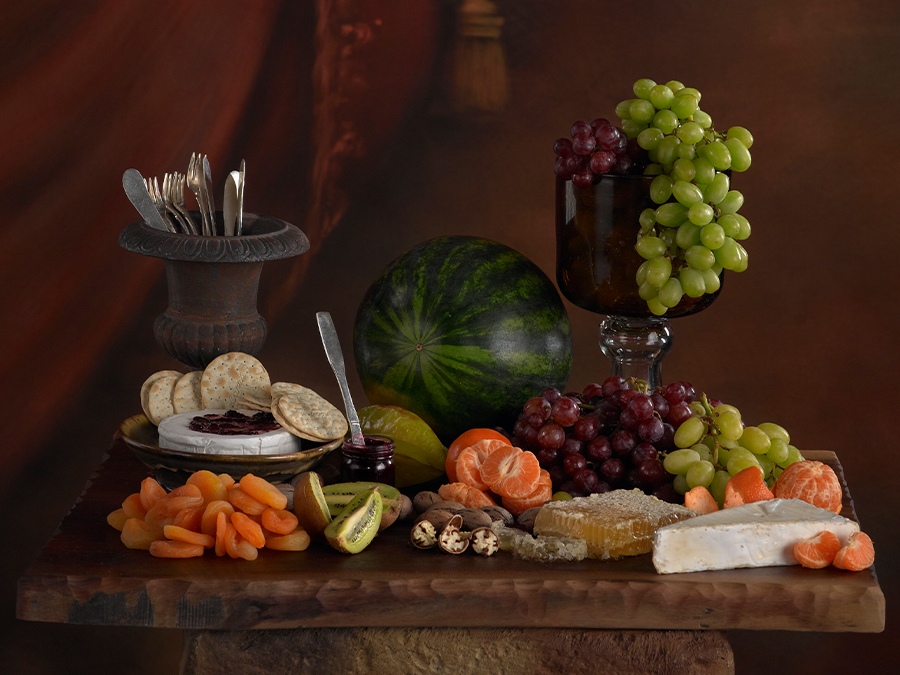
by Wanda | Apr 19, 2018 | blog
Welcome to the Fox n Company Blog! I hope you are as excited as I am about our grazing tables. My intent for this blog is to share with you some of the amazing things I’ve learned through my journey. I plan on giving you tips on cheeses, charcuterie, food pairings and other lessons I’ve learned along the way.
If you’ve read Our Story on the website, some of this will be familiar to you, but since this is the first blog, I want to start at the beginning!
The Love of Artisan Food
Growing up on a farm in Virginia, where we grew everything we ate, deeply influenced my appreciation for what is known today as artisan food. With a southern heritage that stretches from Virginia to the north Georgia mountains, food has always been at the center of everything we did.
The best in fruit, vegetables, pecans and honey comb was always local grown. Meat came from the finest in husbandry – my father and grandfathers. The best in food preservation and learning to cook came from my mother and grandmothers. Whatever the work was on the farm or event at the end of the day, one thing was sure, there would be no lack of beautifully prepared foods. The explosion of flavors was always amazing.
The Road to Grazing Tables … and Home
Life’s road took me a long way from the farm. But the love and appreciation for local food was never far away. When the time came to change up careers, I thought it would be in floral design, growing my own product. I knew something wasn’t in the right order for me. The very core, the very center, the very foundation was missing. When I came full circle, back to food as the center point and floral as the backup singer, then my business righted itself.
From there came the grazing table, a tribute to the abundant table spreads that I remembered. Glorious, abundant, artisan foods produced by small local growers filling the tables. Food became my artwork, designing, staging & creating. All the while knowing that it would draw people into conversation, lingering over food, telling stories, sharing and making memories. Food became the healing power. Food that trapped the power of sunlight & natural energy.
Feeding the heart with food grown and produced by someone with a love and respect for what they do. Their attention to detail and love for what they grow and produce makes my design work an absolute joy.
I have finally returned home – working, designing and feeding the hungry heart!









